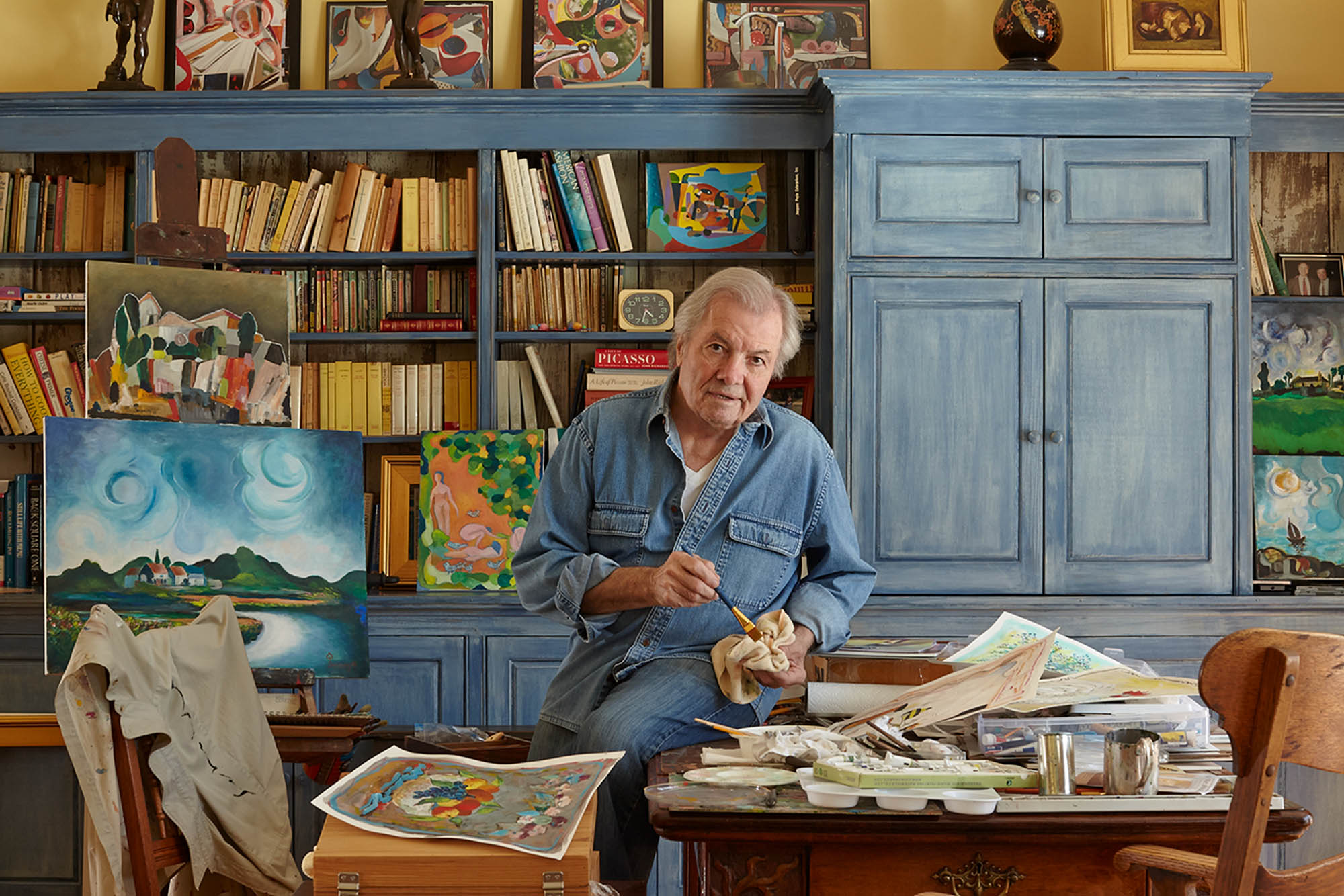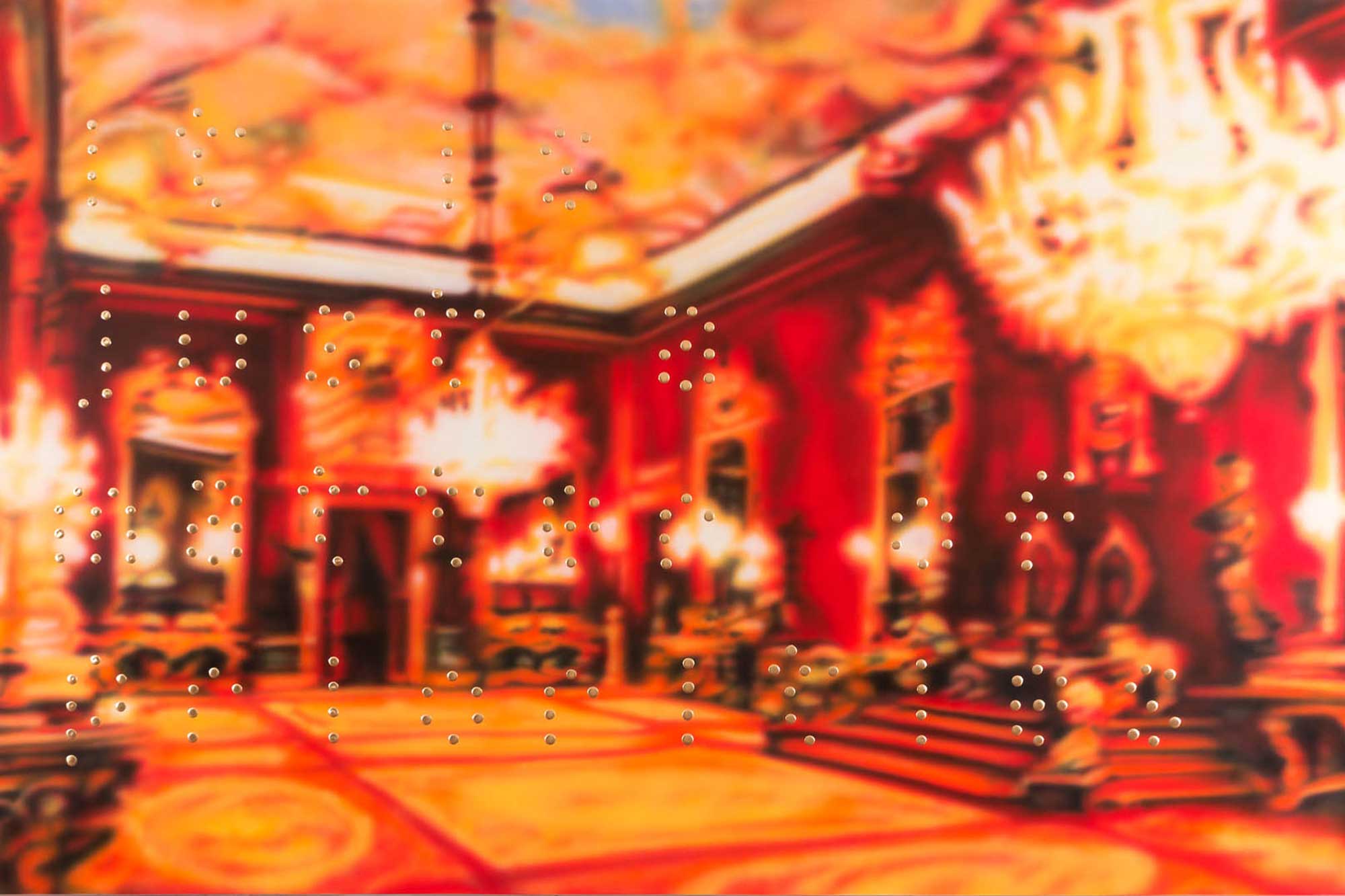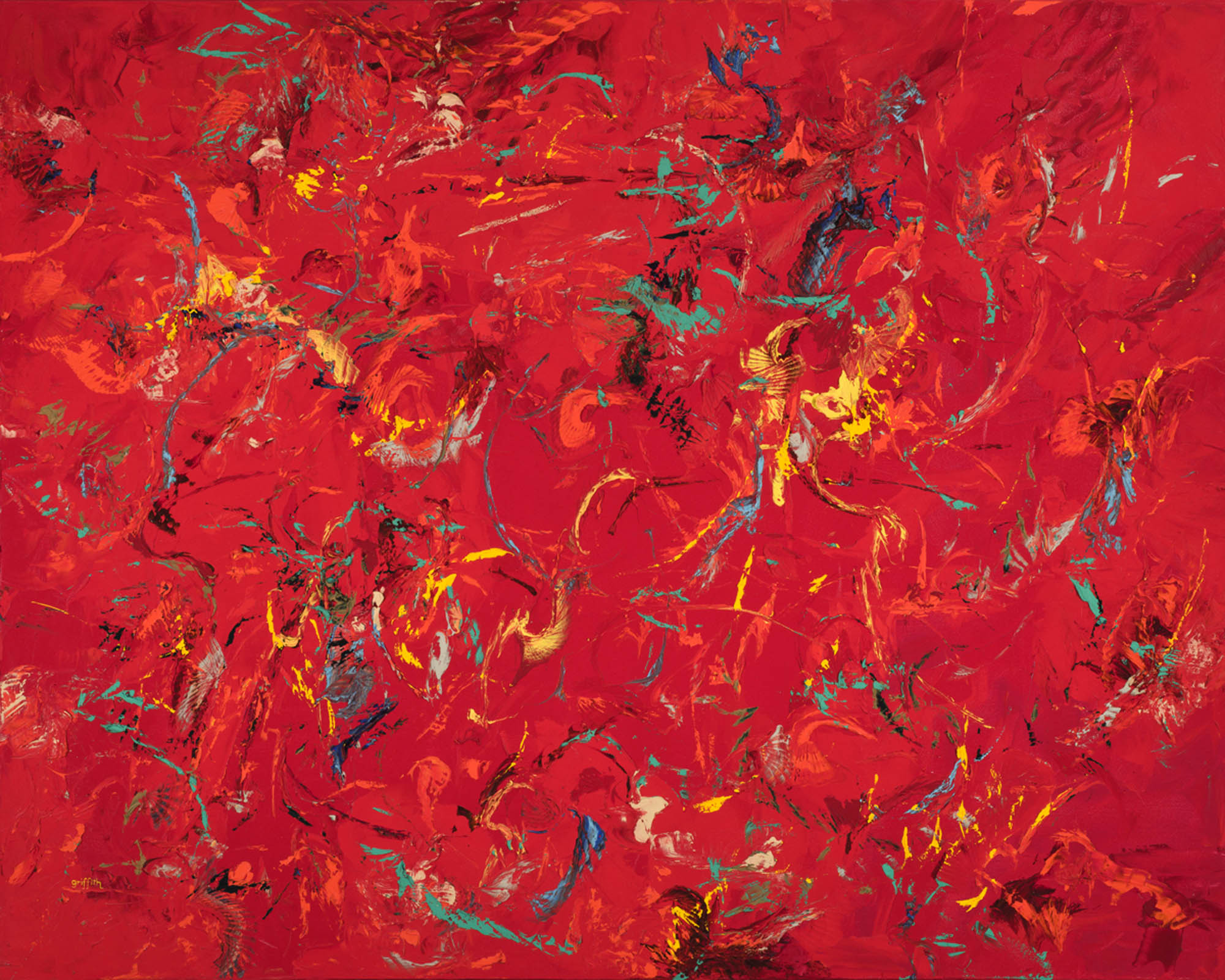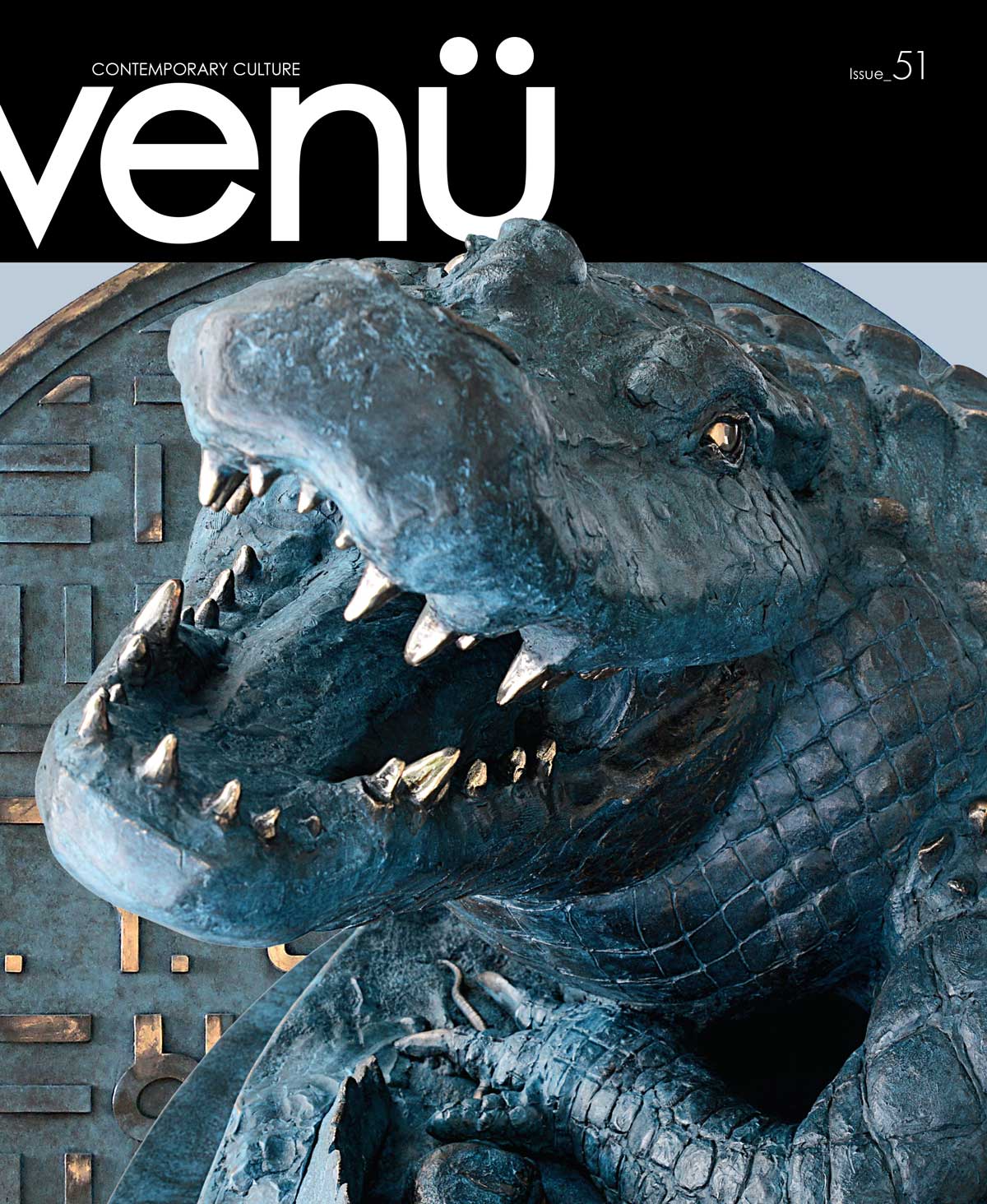
The creation of Pépin’s illustrated menus are what he feels connects his art to his cooking. The chef reflects back upon his career, and in the gatherings he has had for family and friends, and can trace these menus back through his 54 years of marriage. “I have twelve books of menus. I have memories from my mother and my two brothers. These books of menus are really my whole life.”
Creativity resides in us all –– an ebb and flow of ideas and visions that come to us through inspiration or insight. The trick is in knowing creativity. In recognizing it, befriending it, and then in doing the work to bring an idea to fruition.
Jacques Pépin’s creativity and expertise in the kitchen is internationally renowned. But it’s rare that creativity only visits one skill in those who embrace it. Many of us have followed Pépin over the course of his career. We might also have noticed the menus he’s created or the cookbooks he published with illustrations and paintings of flowers, herbs, vegetables, and charming barnyard animals. His artwork spans the representational to the abstract and it seems Pépin is not only creative with a dish but also on a canvas.
Pépin has been painting sporadically for a half a century and he sees similarities in cooking and painting. He speaks elegantly, insightfully, and knowledgeably about both.
Cooking and painting both require a certain amount of preparedness.
“When working in a professional kitchen, you don’t necessarily measure the ingredients. You’re there, testing. You taste, adjust, taste, and adjust and then you find it’s somehow three hours later. You get on a high and don’t realize the time has passed,” said Pépin. “Similarly, I can get into a painting and all of a sudden it’s three hours later.
“You don’t think about it. Things become automatic. You shouldn’t have to look for an onion. It has to be there, ready to be added. Likewise with painting, when I want to add indigo blue or cadmium yellow, I don’t go and look for the tube and open it and so forth. It has to be there.”
“I have much more control over food than I do over painting because I know more about food and am technically trained much better in food than in painting. When I do a dish and start building, it starts usually because perhaps it’s lovely weather and I go out and see a beautiful artichoke or tomato –– and that will start the recipe. Here I have total freedom.”
“In the painting process, it is similar. I start with an idea also, maybe I saw something somewhere. But in painting I can sometimes end up with something entirely different from when I started,” chuckles Pépin.
Many artists will talk about being in “the zone” –– that coveted place where all things come together, and one forgets time and space.
For ten years Pépin wrote for the New York Times. He tells me that when faced with a blank page it can be quite frustrating and it’s sometimes difficult to begin. A new blank canvas can bring great inspiration, but also intimation. However, once you get started the thing takes on a life of its own and carries the artist along with it.
Pépin finds inspiration in a variety of subjects. It can be something he’s seen at a museum, a tree outside, or on a walk with his dog. He attributes his mood to a majority of his paintings. Flowers also inspire him, and he finds the subject provides a great deal of freedom which can lead the artist to a representational work or to something quite abstract. He does not feel that he has any particular style and he’s not quite sure he wants to develop one. And yet, in looking at his oeuvre, one can see hints of France.
“If I go to a museum, I might be influenced by a line from Matisse. Or a Picasso. I find him [Picasso] extraordinary because of the diversity of his work –– from the blue period to the abstract. I don’t think I have a style. I don’t really stay in one style and I don’t really want to, and I can’t really.”
When looking at a piece of fine art from perhaps the 18th or 19th century, Pépin tells me that he admires the precision and the character in those works but he knows he lacks the trained skillset of a professional artist.
“I am a cook,” he says.
But still, art lovers can agree that sometimes we may view something that is technically perfect in execution and yet it lacks heart. It lacks emotion and fails to move us. Pépin’s art has heart.
“I think, like in cooking, I’m trying to get the essential out of a painting. When I was younger, I would keep adding to a dish, and adding, and now that I am older, I find I need less embellishment. When I have a perfect tomato I don’t want a lot of embellishment and with painting also, I try to get what I feel is the essential.”
Herein lies the uniqueness of an artist’s work. The interpretation of the individual. Having taught at Boston University for 38 years, he instructs the young chefs to learn, study, and adjust, but that ultimately they should find their own way.
“At BU, I used to do something called ‘the perfect meal’. I would ask the students to get some ingredients and then I would do something out of that –– maybe it was just a roasted chicken, a boiled potato, and a salad. The students would then have to duplicate that meal, but I’d say to them ‘I know you want to blow my mind and do something totally different. But don’t. Don’t.’
“I know I have twelve students there and I know I will have twelve different chickens. I’ll have two chickens that are overcooked, two that are undercooked, two cold, two too hot, but they will be all different.”
Those same young chefs will go out into the world and work in different restaurants under different chefs. They will learn and absorb a vast amount of knowledge, and just like artists, just like you standing in your kitchen or at your easel, the end product will be different and uniquely your own.
“You cannot escape yourself,” said Pépin. “You don’t have to torture yourself to be different because you already are different. But if you can make a living out of something you love to do … Well, that is the secret to life.”
The creation of Pépin’s illustrated menus are what he feels connects his art to his cooking. The chef reflects back upon his career and in the gatherings he has had for family and friends. He can trace these menus back through his 54 years of marriage and can show his daughter, who is now 52 years old, what was served on her third birthday by pulling out the menu he created and illustrated. Not only is it a memory of the intellect but a memory of the senses –– taste memory –– which Pépin considers much more powerful.
Menus: A Book for Your Meals and Memories, contains approximately 80 of his menus with illustrations. And leaves room for you to create your own menu memories.
“This is the binding of my artwork and my cooking. I write the menu down and record the memory but there is some artistic value there as well. When we would have people coming to the house they might write down a funny thing as a remembrance. If we had a good bottle of wine we would glue the wine label in there. I have twelve books of menus. I have memories from my mother and my two brothers. These books of menus are really my whole life.”
“I don’t know whether my painting has helped my cuisine, or whether my cooking has helped my painting, and I don’t know if one borrows from the other. All I know is that, certainly for me, cooking and painting can live in harmony together. Both are different expressions of who I am and both enhance my life considerably.”
You can learn more about Jacques Pépin’s art at jacquespepinart.com where many of his drawings, original art works, and prints are for sale. Menus: A Book for Your Meals and Memories is available at your favorite book seller.





Leave a Reply